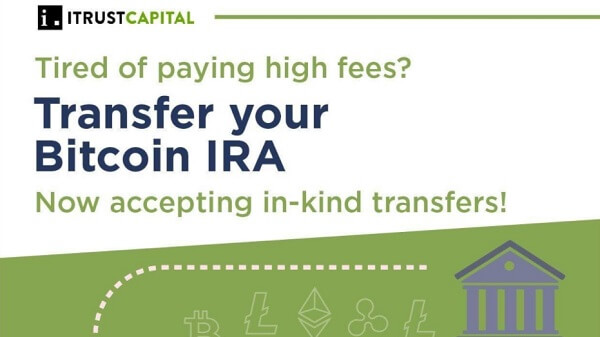The global landscape of crypto-asset regulations is diverse and, even though it is getting more complex, many regulators are still choosing to wait and see how this space develops and what others will do. Right now, all eyes are on the European Union and its bespoke approach to regulating crypto assets.
As part of an expansive digital finance package announced in September 2020, the European Commission, or EC, issued a regulatory proposal titled Markets in Crypto-Assets, or MiCA. The proposal is now making its way through the legislative process and is subject to intense debates. This important regulatory step has been accelerated by concerns over the increasingly fragmented national regulatory landscape for crypto assets within the EU.
The other important trigger for regulatory scrutiny has been the rise of stablecoins. Stablecoins have been around for a few years — with the first stablecoin, Tether (USDT), dating back to 2014 — but they received little regulatory attention until June 2019, when Facebook’s project Libra (which was later rebranded as Diem) was announced. It was a wake-up call for many authorities, as they came to realize that global stablecoins could quickly reach a large scale due to strong network effects, and that this could have systemic implications for the financial sector.
Related: New name, old problems? Libra’s rebrand to Diem still faces challenges
Crypto assets under MiCA
The EC stepped in to capture and regulate all crypto assets not covered by existing EU financial services and proposed a bespoke, comprehensive, mandatory regime for crypto assets under MiCA. The regulation will apply directly across the EU, without the need to transpose it into national laws, and will replace all national frameworks. It aims to provide legal certainty for the industry and market participants, and facilitate legal harmonization.
Related: Chasing the hottest trends in crypto, the EU works to rein in stablecoins and DeFi
MiCA establishes a set of uniform guiding principles for crypto assets that are already applicable more generally in the financial markets, including transparency and disclosure, authorization and supervision, set of the operation, organization and governance measures, consumer protection, and prevention of market abuse.
MiCA provides much-needed definitions and classifications of crypto assets. This is a welcome development that can help to consolidate divergent definitions and taxonomies used across different European jurisdictions and by different market participants. To capture the entire universe of crypto assets (except for crypto assets already covered by financial regulations), a crypto asset is defined very broadly under MiCA as a digital representation of value or rights, which may be transferred and stored electronically using distributed ledger technology or similar technology. This means that any asset put on a blockchain could potentially fall within MiCA regulatory requirements regardless of its nature and economic function. We have to wait for the final version of the regulation to see if any exceptions to this broad scope of application will be introduced in the negotiation process.
Related: The US has already lost the 2020 crypto regulation race to Europe
Categories of crypto assets under MiCA
MiCA identifies three regulatory categories of crypto assets:
E-money tokens, which are used as a means of exchange and aim to achieve stable value by referring to the value of a single fiat currency that is legal tender, such as the euro or U.S. dollar. This would include stablecoins like USD Coin (USDC) and a single currency-pegged Diem (Libra 2.0). Asset-referenced tokens that purport to maintain a stable value by referring to several fiat currencies that are legal tender, one or several commodities, one or several crypto assets, or a combination of such assets. This would include the originally proposed, and currently no longer pursued, version of Libra (Libra 1.0). Finally, the third category of crypto assets is a catch-all for all other crypto assets. It would cover utility tokens and algorithmic stablecoins, but also possibly Bitcoin (BTC) and other similar tokens.
MiCA provides a set of comprehensive regulatory requirements for issuers, including different licensing and operational requirements depending on the type of crypto assets involved. The issuers of asset-referenced tokens and e-money tokens will have to be authorized and established in the EU.
This is certainly good news for those issuers already established and operating within the EU but creates an additional compliance burden for issuers outside the EU. Issuers of asset-referenced tokens will be subject to certain capital, governance and business conduct requirements, and issuers of e-money tokens will also have to be licensed as a credit or electronic money institution and will have to additionally comply with the operational requirements of the e-money legal regime. E-money tokens will have to be issued and redeemed at par value, and the holders will have to be provided with a direct claim against the issuer.
The issuers will be required to produce a white paper setting out important information about the project, including its main features, rights and obligations. Only certain projects and small value offerings will have the benefit of being exempt from this potentially expensive requirement. To address risks of larger projects (like global stablecoins), MiCA provides an additional, more stringent set of rules for “significant” asset-referenced tokens and e-money tokens. For such “significant” tokens, which are classified as such by the European Banking Authority, or EBA, on the basis of the criteria listed in MiCA, there will be stronger capital, investor and EBA supervisory requirements that cover governance, conflicts of interest, reserve assets, custody and the white paper obligations.
Crypto-asset service providers
MiCA also sets out a legal framework for the authorization and operating conditions of crypto-asset service providers, or CASPs. Any CASP will need to be a legal person registered in the EU and will have to be authorized in order to operate. Compliance requirements are similar to those under financial regulations and include prudential safeguards, organizational requirements and specific rules on the safekeeping of clients’ funds.
The list of regulated crypto-asset services also mirrors financial regulations and includes the custody and administration of crypto assets, operation of a trading platform, exchange of crypto assets for fiat currency and for other crypto assets, reception, transmission and execution of orders, placing of crypto assets and, finally, providing advice on crypto assets.
Conclusion
As with any regulatory proposal, MiCA is going through all the cogs of the EU legislative machine. This process will hopefully help to fine-tune MiCA provisions, remove frictions, address any issues and arrive at the most optimal regulation that meets the needs and expectations of all the stakeholders. After MiCA comes into force, there is still an 18-month delay in application of the regulation, except with regard to e-money tokens and asset-referenced tokens, to which the regulation will apply immediately.
MiCA will serve as a precedent for other countries to learn from and either to follow or to set themselves apart for a competitive advantage. It is an ambitious regulatory project. Calibrating such a comprehensive regulatory framework to govern rapidly developing innovation requires a meticulous approach — sufficiently prescriptive to provide legal certainty but flexible enough to allow for future developments.
It also requires careful balancing between four main objectives around which MiCA has been designed: legal certainty, support of innovation, consumer and investor protection, and market integrity. Mistakes will have EU-wide implications and will be complicated to reverse, but getting it right will be an EU-wide success and a huge opportunity for the region.
The views, thoughts and opinions expressed here are the author’s alone and do not necessarily reflect or represent the views and opinions of Cointelegraph.
This article is for general information purposes and is not intended to be and should not be taken as legal advice.
Agata Ferreira is an assistant professor at the Warsaw University of Technology and a guest professor at a number of other academic institutions. She studied law in four different jurisdictions, under common and civil law systems. Agata practiced law in the U.K. financial sector for over a decade in a leading law firm and in an investment bank. She is a member of a panel of experts at the EU Blockchain Observatory and Forum and a member of an advisory council for Blockchain for Europe.
The opinions expressed are the author’s alone and do not necessarily reflect the views of the University or its affiliates.






